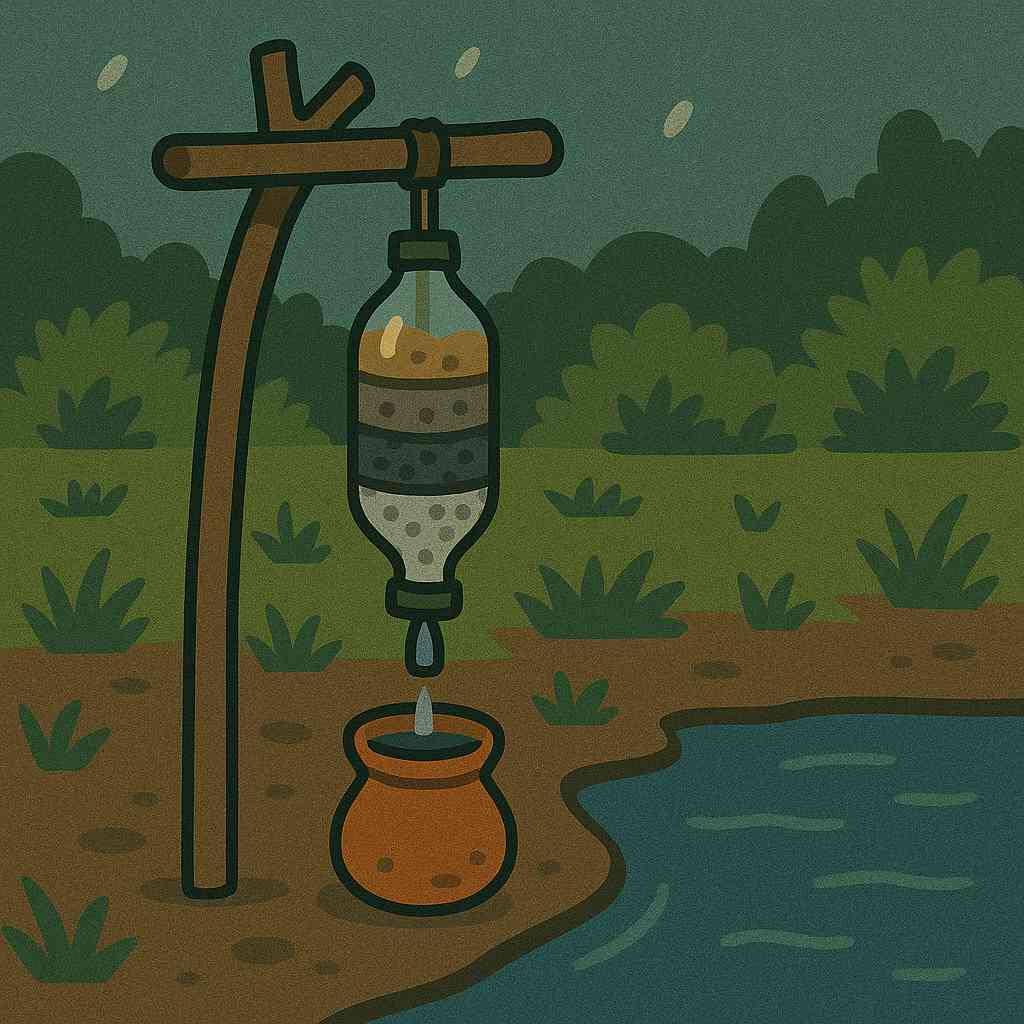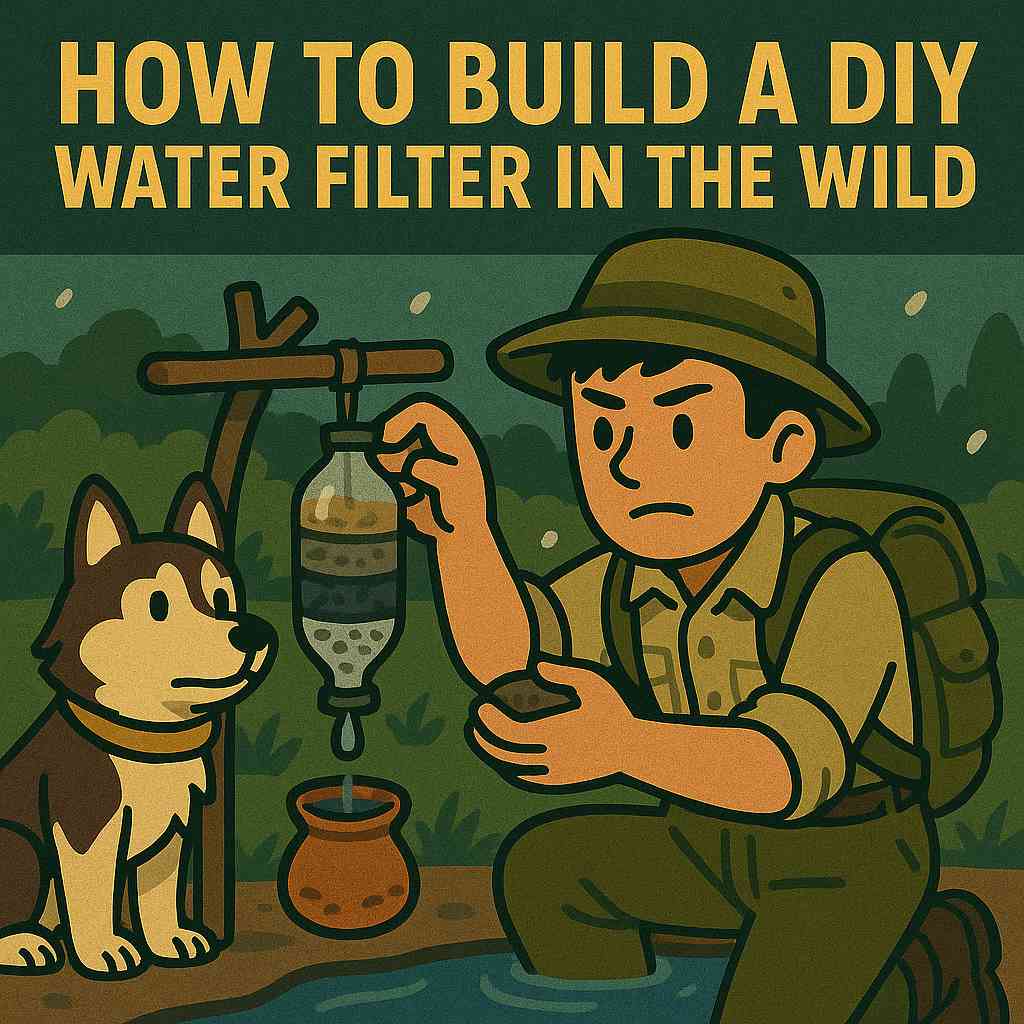✅ Why You Need a DIY Water Filter
In the wilderness, water sources like streams and ponds may contain harmful pathogens. Drinking untreated water can lead to severe illnesses. A DIY water filter helps remove sediments, bacteria, and other contaminants, making the water safer to consume.
✅ Materials Needed
- Plastic bottle or hollowed-out log
- Clean cloth or bandana
- Sand
- Charcoal (from burned wood)
- Small stones or gravel
- Knife or sharp tool
✅ Step-by-Step Guide to Building the Filter
- Cut the bottom off the plastic bottle and invert it to create a funnel.
- Place the clean cloth at the neck of the bottle to prevent materials from falling through.
- Add a layer of charcoal on top of the cloth. Crush the charcoal into small pieces to increase surface area.
- Add a layer of sand over the charcoal. This helps remove finer particles.
- Add a layer of small stones or gravel on top. This removes larger debris.
- Pour the collected water slowly through the top. Collect the filtered water from the bottom.

✅ Additional Tips
- Boil the filtered water if possible to ensure all pathogens are killed.
- Replace the filtering materials regularly to maintain effectiveness.
- Always collect water from the cleanest source available.
✅ Conclusion
Building a DIY water filter in the wild is an essential survival skill. By using natural materials, you can create an effective filtration system to provide safe drinking water during emergencies. Practice this method to be prepared for any situation.
✅ FAQ
Q1. Can this filter remove all bacteria and viruses?
A1. While the filter removes many contaminants, boiling the water after filtration is recommended to ensure all pathogens are eliminated.
Q2. How often should I replace the filtering materials?
A2. It’s advisable to replace the materials after filtering a few liters of water or if the water flow decreases significantly.
Q3. Can I use this method in any environment?
A3. Yes, as long as you have access to the necessary materials like sand, charcoal, and stones.
For a visual demonstration, watch this video:
Related survival guides you may find useful:


